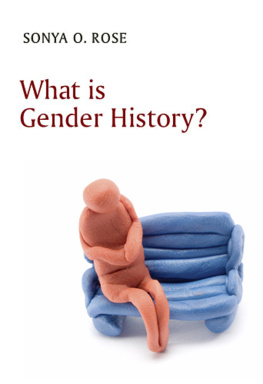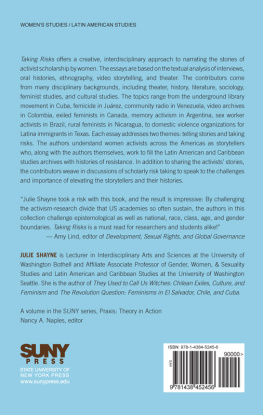Storytellers of Art Histories
Living and Sustaining a Creative Life
The Living and Sustaining a Creative Life series of books reveal the realities of todays artists and culture producers. These timely publications comprise essays that generously share innovative models of creative lives that have been sustained over many years. Their first-hand stories show the general public how contemporary artists, creative individuals and change-makers of the twenty first century add to creative economies through their out-of-the-box thinking, while also contributing to the well-being of others. Although there is a misconception that artists are invisible and hidden, the truth is that they furnish measurable and innovative outcomes at the front lines of education, the non-profit sector, and corporate environments. Intended to spark conversations across and beyond the arts, each path is an inspiring example that provides exceptional insight.
All of the contributors have been chosen by guest editors who are distinctive and generous in their own lives. It is my hope you enjoy each essay as much as I have. I believe they will surely inspire new avenues for artists to thrive for years to come.
Sharon Louden, Living and Sustaining
a Creative Life series editor
Storytellers of Art Histories
Living and Sustaining a Creative Life
Edited by Alpesh Kantilal Patel and Yasmeen Siddiqui

First published in the UK in 2022 by
Intellect, The Mill, Parnall Road, Fishponds, Bristol, BS16 3JG, UK
First published in the USA in 2022 by
Intellect, The University of Chicago Press, 1427 E. 60th Street,
Chicago, IL 60637, USA
Copyright 2022 Intellect Ltd
All rights reserved. No part of this publication may be reproduced, stored in a retrieval system, or transmitted, in any form or by any means, electronic, mechanical, photocopying, recording, or otherwise, without written permission.
A catalogue record for this book is available from the British Library.
Cover image: Shazia Sikander Promiscuous Identities
Patinated bronze 2020 Courtesy of Sean Kelly Gallery
Photo by Jason Wyche
Copy editor: Newgen
Production manager: Tim Mitchell
Typesetting: Newgen
Cover and book design: Holly Rose
Print ISBN 978-1-78938-427-7
ePDF ISBN 978-1-78938-428-4
ePub ISBN 978-1-78938-429-1
Part of the Living and Sustaining a Creative Life series
Print ISSN: 2516-3574 | Online ISSN: 2516-3582
Printed and bound by Lightning Source.
To find out about all our publications, please visit
www.intellectbooks.com
There you can subscribe to our e-newsletter,
browse or download our current catalogue,
and buy any titles that are in print.
CONTENTS
Alpesh Kantilal Patel and Yasmeen Siddiqui
The cover of our book is a painted bronze sculpture by our contributor Shahzia Sikander. Perhaps well known for her work in manuscript painting, she has worked in a variety of media, such as animation and collaborative performance. We both saw thisYasmeen in person and Alpesh virtuallyin December 2020 when it was first exhibited at Sean Kelly Gallery. On a basic level, Sikanders work brings together two lineagesthe Greco-Roman and (South) Asian. The two figures are intertwineda Greek goddess and an Indian devata, or spiritual being.
At first glance, the arrangement of legs and arms suggests that the goddess is carrying the weight of the devata. Or is the latter pushing against or away from the former? It is both/and rather than either/or. Indeed, the delicate interplay between pushing and pulling is a profound metaphor for what Gayatri Gopinath writes are the promiscuous intimacies, a phrase Sikander appropriates for the title of the sculpture, of multiple times, spaces, art historical traditions, bodies, desires and subjectivities.
Sikanders work challenges our assumptions of division (Greco-Roman, Indian) and thereby opens up a space for the writing of a different history of artone that is porous, conflicted, antiracist, and not heteronormative. The contributors to this volume boldly disrupt borders and divisionsdisciplinary and otherwiseand we dedicate this anthology to them for graciously sharing parts of their lives in their deliberate messiness.
Note
Gayatri Gopinath, Promiscuous Intimacies: Embodiment, Desire and Diasporic Dislocation in the Art of Shahzia Sikander, in Shahzia Sikander: Extraordinary Realities, eds. Sadia Abbas and Jan Howard (Munich: Hirmer, 2021), 119.
Alpesh Kantilal Patel and Yasmeen Siddiqui
In early 2017, Sharon Louden asked if we would be interested in editing an anthology for her Living and Sustaining a Creative Life book series, which focuses on the lives of artists working today. This was to be a book about the lives of art historians. She saw a confluence: Alpesh an art historian and theorist working within the academy, Yasmeen an itinerant writer and curator. Both of us, in our realms, eschew orthodoxies and ready-made interpretations of the ways artists have worked and continue to work.
Alpesh was intrigued because his own art historical scholarship often involves bringing himself into the histories of art he writes. He felt quite strongly that if art historians would make their stakes in the subjects about which they write visible, then it would be clear that these histories are subjective. Yasmeens practice involves working closely with artists, designers, editors, and authors. She is interested in long-term engagements with a broad array of meaning makers to build exhibitions, books, and conversations. This project caught her attention as an opportunity to examine and, perhaps, expand the application of the subject at hand, art histories.
We realized early on that contemporary art histories were being written by a range of individuals and that we wanted the anthology to reflect this fact. For instance, we discussed how archives become so important as source material for many historians, and yet archivists are rarely brought to the forefront for the integral roles they play in writing histories. Also, artists have increasingly begun to deconstruct histories as knowledge. Of course, curators and art historians have more traditionally been seen as shapers of knowledge. Yet, at the same time, we noted a huge ideological divide between curatorial studies and those shaping the histories of artdespite the fact that the display of artworks and the beginnings of the writings of art history emerge together and are therefore intertwined.
The writing of histories is about storytelling, which is by its very nature subjective, yet histories are usually taught and presented as inviolable truths. We wanted to frame the anthology through the lens of storytellers rather than art historians. As Gayatri Chakravorty Spivak writes, History is, after all, a storying. The French language has it very conveniently in the word histoire which means both history and story.
We focused on those who were actively dealing with issues of gender, race (including Whiteness), class, sexuality, and trans/nationality. We are proud that we have twice as many contributions by women than men. We also felt that we did not want this anthology to somehow appear as something radical that had never been done before. Therefore, we purposefully focused on an intergenerational approach that would bring together individuals who are early or mid-career with those who have been pushing against cisgender White males for decades. We also wanted to make sure that contributors would not only come from the Euro-American monolith. While the dominant art history is a collection of stories of art from Western Europe and North America, it is generally not marked as the regional art history it is.











